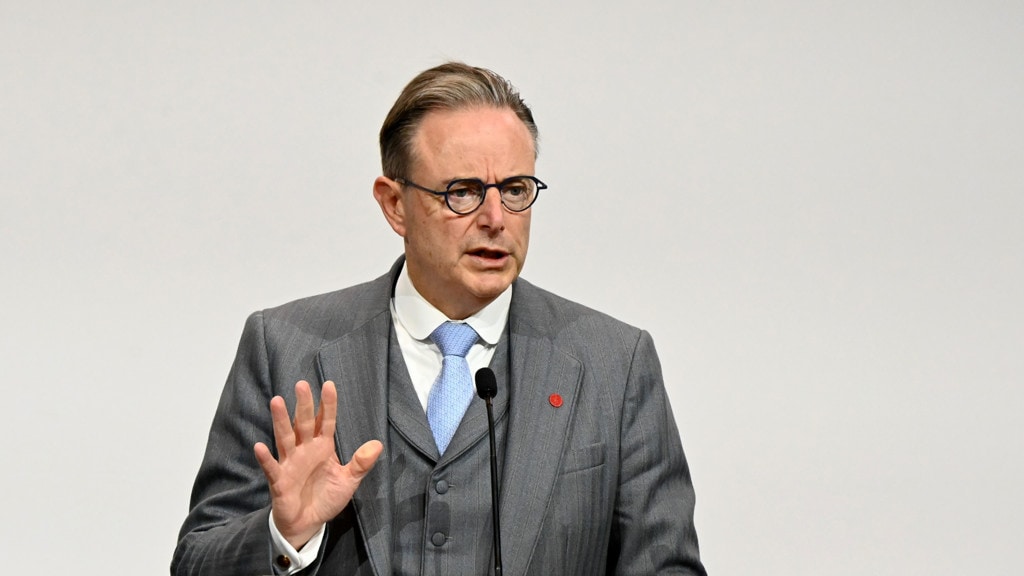This is how the EU wants to 'lend' frozen Russian money to Ukraine

It is a daring idea that has been circulating in Brussels for years: making Russia, as the aggressor, pay for the enormous damage it is causing in Ukraine through Russian assets frozen in the EU.
Transferring proceedsIn fact, it is already happening to some extent. The proceeds from interest and dividends from European-blocked Russian central bank assets have been skimmed off since last year and made available for aid to Ukraine.
For example, the Belgian securities firm Euroclear, where the bulk of Russian assets are held, transferred €1.6 billion to the European Ukraine Fund for the first time in July 2024. Since then, over €10 billion in proceeds from the frozen Russian funds have been transferred to Ukraine, the German weekly Welt am Sonntag reported this summer.
But the EU is thinking bigger. It now also wants to transfer a large portion of the frozen Russian assets to Ukraine itself. The Russian money has been frozen as part of the sanctions imposed since February 2022 following the large-scale Russian invasion of Ukraine. According to the Flemish business newspaper De Tijd , at the end of last year, this amounted to a total of €212 billion, of which approximately €183 billion was parked with Euroclear.
Special constructionTo get this Russian money into Ukraine, a unique scheme has been devised. The European Commission's current plan is for Euroclear to lend €140 billion in frozen Russian assets to the EU, interest-free. The EU will then pass the money on as a loan to Ukraine. The war-torn country will only have to repay the amount once it has received reparations from Russia.
In this way, Putin's regime will be held accountable for the damage it causes, European Commission President Ursula von der Leyen said this week at the informal European summit in Copenhagen.
Full of risksThat sounds like justice to many, but the plan carries legal, political, and economic risks. "Legally, the EU is treading on thin ice," says sanctions lawyer Heleen over de Linden. "The Russian central bank owns this money. A court ruling that the bank is liable for damages to Ukraine is required first. Simply using money without permission is essentially illegal."
Central banks must be confident that their reserves abroad are safe. The EU risks that other countries (think China, Turkey, or the oil-rich country of Venezuela) will hesitate in the future to hold their foreign assets in euros – for fear that they will one day be appropriated by the EU.
Tax revenues Belgium"We're taking a huge gamble and venturing into uncharted waters. There's no precedent," Belgian Prime Minister Bart de Wever said today in Copenhagen. He wants to prevent Belgium from having to bear the risks of this risky operation alone.
It's a factor that Belgium currently receives a lot of tax on frozen assets from Russia because the assets are held with Euroclear. After all, this commercial company is required to pay taxes in Belgium. Those tax revenues (as much as 1.7 billion euros last year) The Belgians would like to use this money for their high defense spending. The EU plan therefore threatens to create a new hole in the Belgian budget.

Despite this, lawyer Over de Linden understands why the EU wants this. "Given the extreme circumstances and how Russia is behaving in Ukraine, I understand the plan. The European Central Bank also provides sufficient guarantees. If a peace agreement is reached, it will be clear who will compensate for what damage. The damage to Russia is likely much greater than those €140 billion. In that case, this is an advance payment."
Ukraine needs a lot of money to shore up the large budget shortfalls and to buy enough weapons to continue defending itself. This is especially true now that the US, under Trump, no longer wants to support the country financially and will only supply weapons if the EU pays for them.
War costs the EU a lot of moneyMeanwhile, the bill for EU countries continues to mount. "Skimming off and transferring Russian assets that are already frozen will lighten that bill and ensure that Ukraine can continue to receive support without having to send voters a difficult message about more military aid to Ukraine," says political reporter Roel Schreinemachers from Copenhagen.
This combination has changed the way we think about this controversial plan. This has likely been further exacerbated by the drone and sabotage actions that Russia has recently undertaken in several European countries.
The risks of using Russian frozen assets must first be properly mapped out, caretaker Prime Minister Dick Schoof said today in Copenhagen:
Schreinemachers expects it will take at least several weeks before the plan is finally approved. "At the same time, there's a sense of urgency. The Ukrainian deficit threatens to become unsustainable next year."
Retaliation by Russia?Russia has already responded strongly to the European plan. The Kremlin warns that individuals and countries involved in the "theft" of frozen Russian assets in Europe could face retaliatory measures.
One option would be to also seize Western assets held by companies and individuals in Russia, which are currently restricted (so-called Type C accounts), and vice versa. The Kremlin could also confiscate and sell the assets and shares of European companies in Russia.
RTL Nieuws





